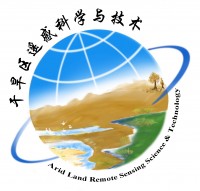Spatiotemporal Dynamics of Water Table Depth Associated with Changing Agricultural Land Use in an Arid Zone Oasis
2019
期刊
Water
下载全文
Investigating spatiotemporal dynamics and varying relationships between water table depth (WTD) and land use changes is critical for efficient groundwater management and land use planning in arid zones. The primary objective of the present study is to combine satellite and field measured data to quantitatively analyze variations in WTD and its relationship with land use change in the Ogan–Kucha River Oasis in the northwest arid zones of China, and reveal the spatial heterogeneity and variations in the abovementioned relationship at spatiotemporal scales. The spatiotemporal variations in WTD and land use change at different time intervals (1997–2007, 2007–2017, and 1997–2017) were analyzed based on geostatistical analysis methods and grid cell approaches. The relationships between land use types and changes in WTD were assessed using correlation and ordinary least square analyses. The relationships between spatiotemporal variations in WTD and land use change were explored using local level geographically weighted regression. The results indicated that influences of human activity on the variation of WTD have gradually increased, and that WTD has declined rapidly in most parts of the study area. The spatial distribution of WTD exhibited significant spatiotemporal heterogeneity, and WTD was lower in the inner parts of the oasis and shallower in the oasis-desert ecotone. The WTD decline rates in the irrigation area were much higher than those in the oasis-desert ecotone. The cultivated land area has expanded markedly, whereas the shrub covered area has shrunk rapidly. Changes in WTD were positively correlated with changes in cultivated land area, and the expansion center of cultivated land has gradually moved from upstream of the alluvial fan to downstream of the alluvial fan and to the oasis-desert ecotone. The relationships between changes in cultivated land and WTD in the ecotone were more prominent than those in the inner parts of the oasis. Therefore, agricultural land expansion and planning in the study area should be integrated based on spatiotemporal changes in the groundwater depth to maintain the stability of groundwater systems and sustainable groundwater exploitation.
